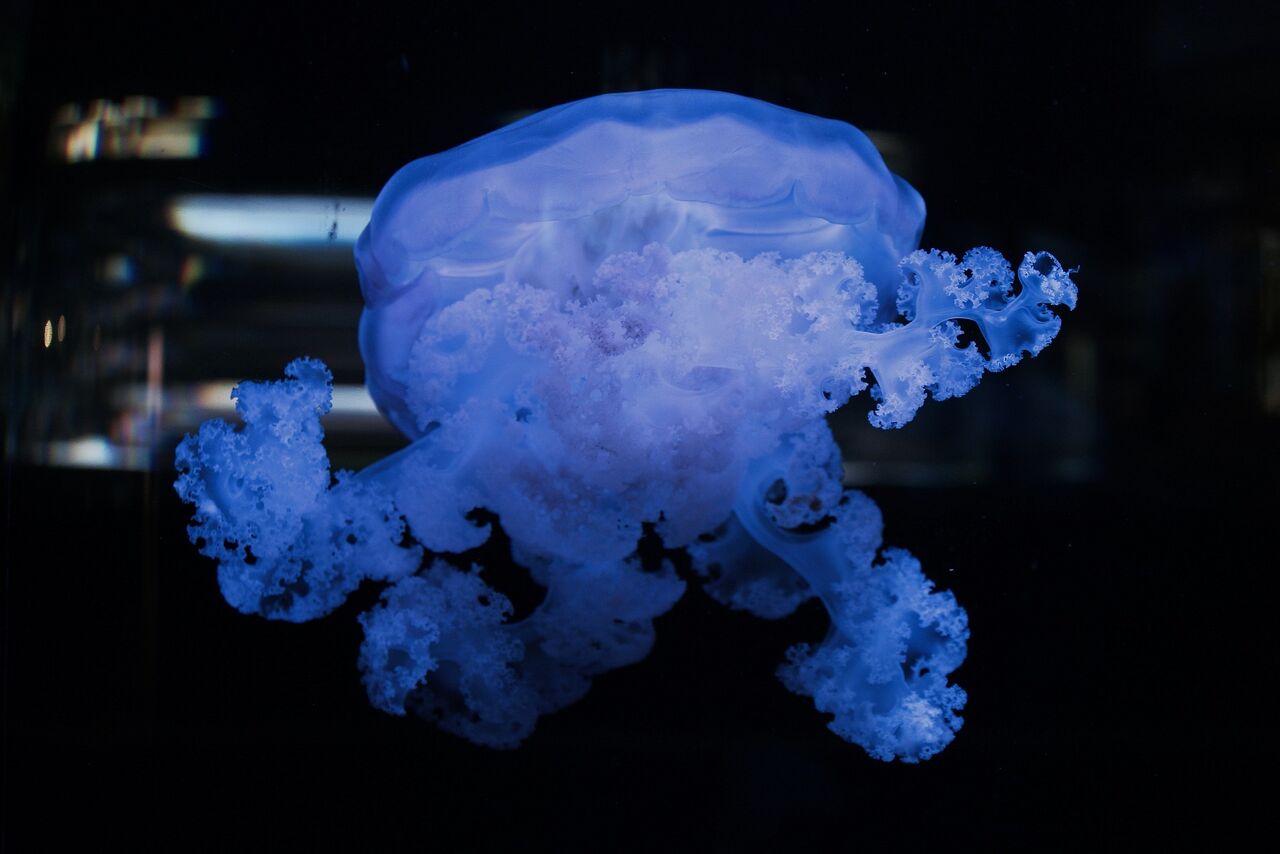Appearance and lifestyle:
The Benguela compass jelly (Chrysaora fulgida) is one of three closely related species that are endemic to the South African coast. Its umbrella's circumference can grow up to 80cm across, which is large for a jelly. From the top of its head to the end of its frilly oral arms, it can stretch to just over 2m long.
Its sting is only about as bad as a bee sting, so not terribly dangerous to humans. Compass jellyfish change colour numerous times as they grow. As ephyrae, they are maroon-coloured but become transparent as they mature. At the final medusae stage, the jellyfish turn light pink and develop compass markings. Swarms of these jellies can shut down power plants and mines, causing significant damage to fisheries and aquaculture all along the west coast of South Africa.
Habitat:
Endemic to the South African coast.
Diet:
They mainly eat other jellies (which is known as “jellyvorous”), as well as plankton and fish like anchovy, horse mackerel and pilchard.
Threats:
Climate change, pollution, overfishing.
